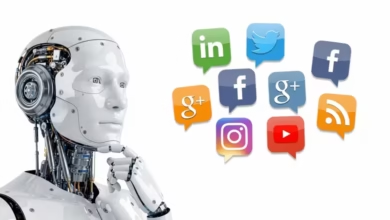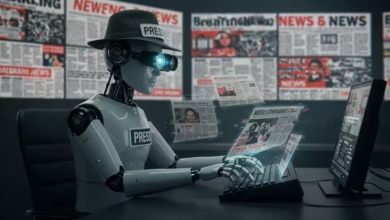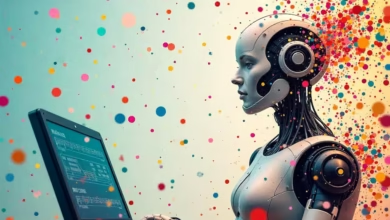What Is Generative AI and How Is It Changing the Internet?

This blog post explores the concept of generative AI, addressing the question of what is generative AI and its transformative effect on the internet. It explains the mechanisms behind AI image generators and highlights how they are reshaping visual content creation. The article also delves into content creation AI, emphasizing its revolutionary impact on digital media by streamlining processes and enhancing creativity. Additionally, it provides actionable insights for individuals and businesses looking to leverage generative AI in their strategies. From enhancing user engagement to optimizing content generation, the post serves as a comprehensive guide on the potential applications and importance of generative AI in today’s digital landscape.
Understanding What Is Generative AI And Its Impact
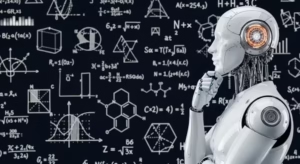
To grasp what is generative AI, it is crucial to understand the technology’s underlying mechanism, which involves using generative models. These models are capable of producing new content by learning patterns from existing data. As a result, they can create anything from art and music to text and images, radically changing how digital content is produced. The implications of this technology stretch far beyond mere creativity, influencing various sectors, including entertainment, marketing, and even education.
Key Aspects of Generative AI
- Algorithms that learn from data.
- Ability to generate new and unique content.
- Applications across multiple domains, including art and science.
- Improvement of creative workflows.
- Potential ethical concerns regarding content authenticity.
- Enhancement of user engagement through personalized content.
Generative AI can also enhance collaborative projects by providing tools that allow creators to explore unprecedented combinations of ideas. For example, artists can utilize these generative models to test various styles or genres, fostering a new wave of hybrid creativity. Moreover, organizations leveraging these tools can optimize their processes and personalize user experiences, thereby maximizing reach and impact.
The influence of generative AI is particularly noteworthy in digital media, as it challenges traditional notions of authorship and creativity. As we continue to explore the capabilities of this technology, it will be interesting to see how it reshapes our understanding of art and content creation.
In conclusion, understanding what is generative AI and its vast potential can empower stakeholders to harness its capabilities effectively. While the technology offers numerous benefits, it is essential to remain vigilant regarding its ethical implications. As generative models evolve, so too will their impact on our digital landscape, paving the way for innovative solutions and creative breakthroughs.
Exploring AI Image Generators And Their Mechanisms
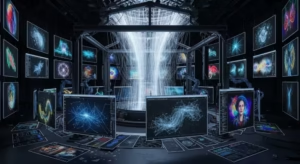
AI image generators are a remarkable application of generative AI technologies that take textual descriptions and convert them into vivid visuals. These tools leverage advanced algorithms and machine learning techniques to understand and interpret user inputs, creating images that could range from realistic representations to abstract art. As we delve deeper into the mechanics of these systems, it becomes clear how they are reshaping the landscape of digital creativity and personal expression.
| Type of AI Image Generator | Core Technology | Typical Use Cases |
|---|---|---|
| Text-to-Image Tools | Deep Learning | Art Creation, Marketing |
| Style Transfer Generators | Neural Networks | Photo Enhancement |
| 3D Model Generators | GANs (Generative Adversarial Networks) | Video Game Design |
| Image Restoration Tools | Machine Learning | Photo Recovery, Restoration |
Generative AI is shifting artistic boundaries, and AI image generators are at the forefront of this transformation. They not only assist artists and designers in creating new works effortlessly but also enable those without traditional art training to explore their creativity. As these tools become more accessible, they invite a broader audience to participate in the generation of visuals, fundamentally democratizing art creation and visual storytelling.
Different Types of AI Image Generators
Understanding the different types of AI image generators can help users select the right tool for their creative needs. Each type varies in functionality and application, catering to distinct user requirements. The primary categories include text-to-image tools, which craft visuals from descriptive text, and style transfer generators that apply particular artistic styles to existing images. Furthermore, 3D model generators are used for creating intricate designs for games and simulations, bolstering the tech art domain.
Applications of AI Image Generators
The applications of AI image generators are vast, enhancing multiple sectors including digital marketing, entertainment, and social media. Brands leverage these tools for creating engaging visual content that captures audience attention and promotes products effectively. Well-known platforms utilize text-to-image tools for content creation, enabling users to visualize concepts, thereby enhancing user engagement. Overall, the capacity of these generators to produce unique and tailored visuals is transforming how businesses and individuals communicate ideas.
Steps to Utilize AI Image Generators
- Identify your project needs and objectives.
- Select the appropriate AI image generator based on your requirements.
- Craft a clear and descriptive input text for the generator.
- Adjust settings or parameters to refine the output according to your vision.
- Generate the image and review the results for quality.
- Make necessary tweaks or re-generate until satisfied with the outcome.
- Utilize the final image in your project or share on relevant platforms.
As we continue to explore the marvels of generative AI, it is evident that AI image generators are not just tools for production but also gateways to innovation and creativity. They allow users to tap into vast possibilities for visual expression while pushing the boundaries of traditional artistry in the digital realm.
Content Creation AI: Revolutionizing Digital Media
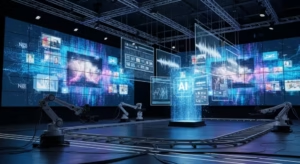
As the digital landscape continues to evolve, content creation AI has emerged as a powerful tool that reshapes the way we interact with information online. Understanding what is generative AI is crucial, as it encompasses various technologies that enable machines to produce original content based on patterns and data inputs. This revolutionary capability is allowing marketers, creators, and businesses to generate high-quality content at unprecedented speeds, facilitating a dramatic shift in the content generation paradigm.
The integration of generative models in various sectors equips users with the ability to streamline their content creation processes, allowing for enhanced creativity and efficiency. By leveraging these advanced technologies, users can produce a vast array of digital media, including articles, images, and videos, while significantly reducing the time and effort traditionally involved. This shift not only impacts individual creators but also transforms entire industries by democratizing access to content creation tools.
Benefits of Using Content Creation AI
- Increases productivity by automating repetitive tasks.
- Enhances creativity by offering innovative ideas and perspectives.
- Improves content optimization for search engines.
- Enables scalability in content production to meet demand.
- Reduces costs associated with hiring content professionals.
- Provides data-driven insights to better cater to audience needs.
Content creation AI is not solely a means to produce text; it spans across multimedia applications and can significantly aid in content strategy development. As we explore the capabilities of these tools further, it’s evident how they become integral to marketing strategies, allowing businesses to stay relevant in a fast-paced digital world. In the subsequent section, we will delve into examples of successful content generation tools that exemplify the power of generative AI.
Examples of Popular Content Creation AI Tools
Several content creation AI tools have gained popularity due to their effectiveness and user-friendly interfaces. These platforms utilize the principles of generative AI to assist users in creating impactful content tailored to their needs. From text generation tools like GPT-3 to image and video creation platforms, organizations are harnessing the power of these technologies to enhance their content portfolio.
Actionable Insights For Leveraging Generative AI
As businesses and creators seek to harness the potential of generative AI, it is essential to understand its practical applications and how to utilize it effectively. The core of what is generative AI lies in its capability to produce new content by learning from existing datasets. This technology not only enhances creativity but also optimizes workflows, enabling users to generate innovative outputs such as images, text, and music with minimal effort. By integrating generative AI into projects, organizations can significantly improve productivity and broaden their creative horizons.
Steps to Implement Generative AI in Your Projects
- Identify specific needs within your project that can benefit from generative AI.
- Research and select appropriate generative AI tools, such as text-to-image tools, tailored to your objectives.
- Gather and prepare datasets that will train the AI model for your desired output.
- Develop a clear plan outlining how generative AI will integrate into your existing workflows.
- Test the generated outputs for quality and relevance, making necessary adjustments to the parameters.
- Iterate on your approach based on feedback and the results received, refining the model over time.
- Monitor the performance and impact of the generative AI applications on your project goals.
Incorporating text-to-image tools can be a game-changer in various domains, from marketing to digital content creation. However, it is crucial to remain aware of ethical considerations and the potential implications of AI-generated content. As you explore the question of what is generative AI, ensure that your implementations align with best practices, promoting innovation while maintaining transparency and accountability. By doing so, you will not only innovate your offerings but also establish trust with your audience and stakeholders.
Brifing Document: Generative AI: Reshaping the Digital Landscape
Overview
Generative AI is a transformative technology that uses “generative models” to learn patterns from existing data and produce “new and unique content” across various mediums, including art, music, text, and images. This technology is fundamentally changing how digital content is produced, impacting sectors such as entertainment, marketing, and education. It offers significant benefits in terms of efficiency, creativity, and personalization but also raises important ethical considerations regarding content authenticity and authorship.
Key Themes and Concepts
1. Understanding Generative AI and Its Impact
- Mechanism: Generative AI relies on “generative models” that “learn patterns from existing data” to “produce new content.”
- Broad Applications: Its capabilities extend beyond mere creativity, influencing diverse sectors like “entertainment, marketing, and even education.”
- Key Aspects:Algorithms learn from data.
- Ability to generate new and unique content.
- Applications across multiple domains, including art and science.
- Improvement of creative workflows.
- “Potential ethical concerns regarding content authenticity.”
- “Enhancement of user engagement through personalized content.”
- Collaboration and Optimization: Generative AI enhances collaborative projects by allowing creators to “explore unprecedented combinations of ideas” and enables organizations to “optimize their processes and personalize user experiences.”
- Challenge to Traditional Notions: It “challenges traditional notions of authorship and creativity” in digital media.
2. AI Image Generators: Democratizing Visual Content Creation
- Functionality: These are a remarkable application of generative AI that “take textual descriptions and convert them into vivid visuals.” They leverage advanced algorithms to interpret user inputs, creating images ranging from realistic to abstract art.
- Reshaping Creativity: AI image generators “shift artistic boundaries,” assisting artists and designers while also enabling those “without traditional art training to explore their creativity.” This “fundamentally democratiz[es] art creation and visual storytelling.”
- Types of AI Image Generators:Text-to-Image Tools: Craft visuals from descriptive text (e.g., for “Art Creation, Marketing”).
- Style Transfer Generators: Apply artistic styles to existing images (e.g., for “Photo Enhancement”).
- 3D Model Generators: Create intricate designs for games and simulations (e.g., for “Video Game Design”).
- Image Restoration Tools: Used for photo recovery and restoration.
- Vast Applications: Enhance sectors like “digital marketing, entertainment, and social media,” allowing brands to create engaging visual content and platforms to enhance user engagement.
- Utilization Steps: A clear process for using these tools includes identifying needs, selecting the right tool, crafting clear input text, adjusting settings, generating, reviewing, tweaking, and finally utilizing the image.
3. Content Creation AI: Revolutionizing Digital Media
- Core Capability: “Enables machines to produce original content based on patterns and data inputs,” allowing marketers, creators, and businesses to “generate high-quality content at unprecedented speeds.”
- Efficiency and Creativity: Integrates generative models to “streamline their content creation processes, allowing for enhanced creativity and efficiency,” producing various digital media, “including articles, images, and videos,” with reduced time and effort.
- Democratization: This shift “democratizes access to content creation tools.”
- Benefits:“Increases productivity by automating repetitive tasks.”
- “Enhances creativity by offering innovative ideas and perspectives.”
- “Improves content optimization for search engines.”
- “Enables scalability in content production to meet demand.”
- “Reduces costs associated with hiring content professionals.”
- “Provides data-driven insights to better cater to audience needs.”
- Beyond Text: Spans “multimedia applications” and aids in “content strategy development,” becoming integral to marketing.
- Popular Tools: Examples include “GPT-3” for text generation and various “image and video creation platforms.”
4. Actionable Insights for Leveraging Generative AI
- Practical Applications: The core capability is to “produce new content by learning from existing datasets,” enhancing creativity and optimizing workflows.
- Implementation Steps:Identify specific project needs.
- Select appropriate generative AI tools (e.g., “text-to-image tools”).
- Gather and prepare datasets for training.
- Develop a clear integration plan.
- Test and adjust outputs for quality and relevance.
- Iterate and refine the model.
- Monitor performance and impact.
- Ethical Considerations: Emphasizes the importance of being “aware of ethical considerations and the potential implications of AI-generated content.” Implementations should “align with best practices, promoting innovation while maintaining transparency and accountability.” This builds “trust with your audience and stakeholders.”
Generative AI is a rapidly evolving field poised to significantly reshape the digital landscape. Its ability to create new and unique content from diverse data sources offers immense potential for innovation, efficiency, and personalized experiences across various industries. While the benefits are clear, stakeholders must remain vigilant about ethical implications, ensuring responsible development and deployment to harness its full potential effectively.
For similar articles, please visit: AI in Art, Creativity & Media
Homepage / humanaifuture.com
🎧 Listen to the Podcast
Want to explore this topic in more depth? Listen to the full podcast for more insights and expert commentary.
▶️ Play on Google DriveNo sign-up needed — just click and listen.
How is Generative AI impacting digital content creation?
Generative AI is revolutionizing digital content creation by streamlining processes, enhancing creativity, and enabling the rapid production of high-quality content. It allows creators and businesses to generate a wide array of digital media, from articles and images to videos, significantly reducing the time and effort traditionally involved. This technology democratizes access to content creation tools, allowing even those without traditional training to produce sophisticated digital assets.
What are AI image generators and what are their main applications?
AI image generators are a remarkable application of generative AI that convert textual descriptions into vivid visuals. They use advanced algorithms and machine learning to understand user inputs and create images ranging from realistic representations to abstract art. Their main applications include art creation, marketing, photo enhancement, video game design (through 3D model generators), and image restoration. These tools are democratizing visual storytelling by enabling a broader audience to participate in image generation.
What are the different types of AI image generators?
There are several types of AI image generators, each with distinct functionalities and applications. Key categories include:
- Text-to-Image Tools: These craft visuals directly from descriptive text, often used for art creation and marketing.
- Style Transfer Generators: These apply particular artistic styles to existing images, commonly used for photo enhancement.
- 3D Model Generators: These create intricate designs for games and simulations, bolstering the tech art domain.
- Image Restoration Tools: These leverage machine learning for photo recovery and restoration.
What are the key benefits of using Content Creation AI?
Content Creation AI offers numerous benefits, including:
- Increased productivity: By automating repetitive tasks.
- Enhanced creativity: By offering innovative ideas and perspectives.
- Improved content optimization: For search engines.
- Scalability: In content production to meet demand.
- Cost reduction: Associated with hiring content professionals.
- Data-driven insights: To better cater to audience needs.
How can individuals and businesses effectively leverage Generative AI in their projects?
To effectively leverage Generative AI, individuals and businesses should:
- Identify specific needs: Determine project areas that can benefit from generative AI.
- Select appropriate tools: Research and choose generative AI tools, such as text-to-image tools, tailored to objectives.
- Prepare datasets: Gather and prepare relevant data to train the AI model.
- Plan integration: Develop a clear plan for integrating generative AI into existing workflows.
- Test and refine: Test generated outputs for quality and relevance, making necessary adjustments.
- Iterate: Continuously refine the model based on feedback and results.
- Monitor performance: Track the impact of AI applications on project goals.
What ethical considerations are associated with Generative AI?
As generative models evolve, potential ethical concerns regarding content authenticity are becoming increasingly important. While the technology offers numerous benefits, vigilance is essential regarding its implications. Stakeholders need to remain aware of these ethical considerations and ensure that their implementations align with best practices, promoting innovation while maintaining transparency and accountability, particularly concerning AI-generated content.
How is Generative AI challenging traditional notions of authorship and creativity?
The influence of generative AI, particularly in digital media, is profoundly challenging traditional notions of authorship and creativity. As AI can produce original content, it blurs the lines of who or what is the "creator" of a piece. It allows creators to explore unprecedented combinations of ideas and styles, fostering new waves of hybrid creativity and democratizing art creation. This shift prompts a re-evaluation of how we understand and attribute art and content creation in the digital age.


